Art & Exhibitions
A Taiwanese Artist Confronts the Mundane Realities of Conflict in Venice Exhibition
The pioneering video artist Yuan Goang-Ming questions what comfort means when war is always looming.
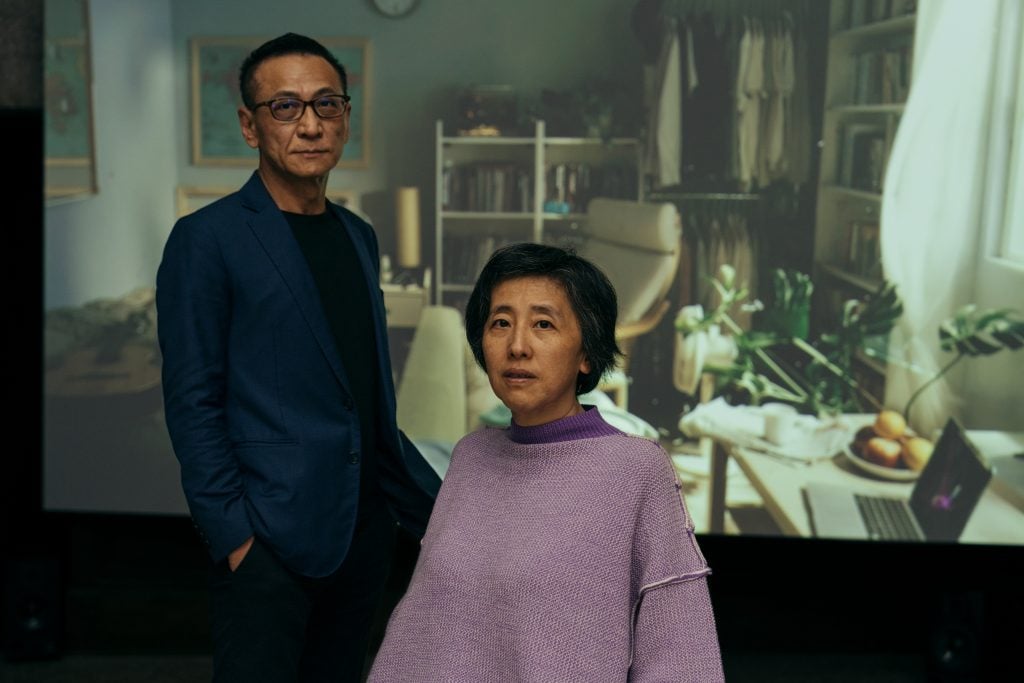
The pioneering video artist Yuan Goang-Ming questions what comfort means when war is always looming.

Vivienne Chow

As soon as you set foot in the main hall of the first floor of Venice’s Palazzo delle Prigioni, you are confronted by a surreal vision of Taipei. The typically bustling city is seen at a stand-still in a drone video projected onto a large screen. But this quiet, empty scene is quickly disrupted: The sound of sirens, explosions, gun shots, and a cacophony of jumbled cutlery and tableware disrupt the hushed space. Although you’re curious as to what could be making these noises from inside the exhibition, you fear that you may be entering a rehearsal for the unthinkable.
“I wish this was just an exhibition,” said Abby Chen, the curator behind artist Yuan Goang-Ming’s show, “Everyday War,” an official collateral event of the 60th Venice Biennale, presented by Taiwan’s Taipei Fine Arts Museum (TFAM).
“War can happen anytime, anywhere,” Chen added. “It’s not so remote anymore. But at the same time, a war can be understood as how a person deals with the reality [of conflict] on a day-to-day basis.”
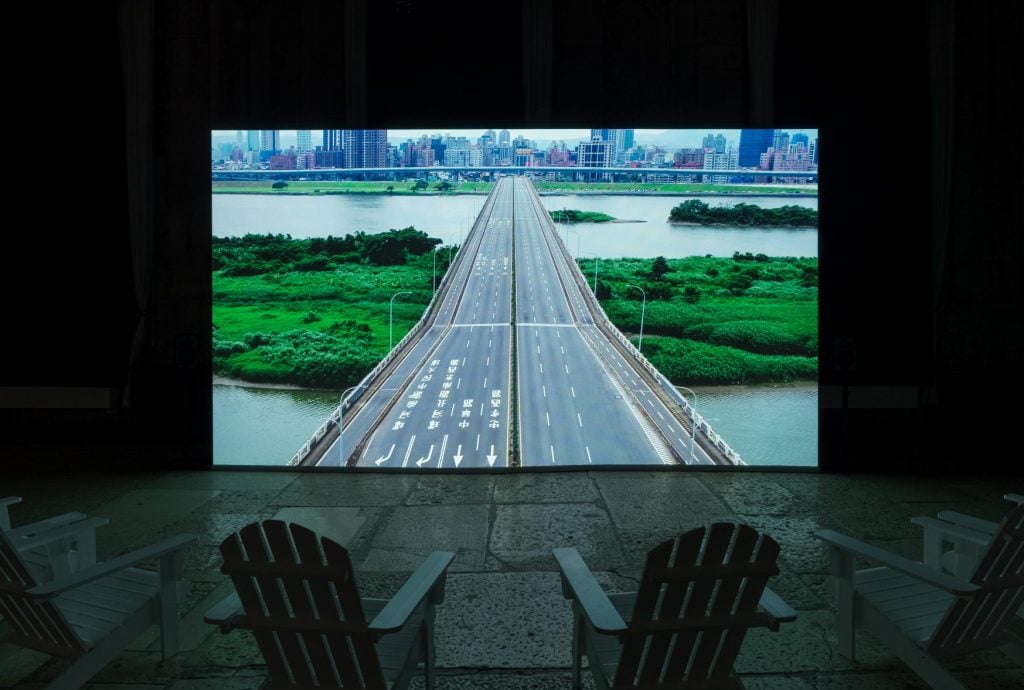
Installation view of Yuan Goang-Ming’s Everyday Maneuver (2018) at “Everyday War,” a collateral event of the 60th Venice Biennale, 2024. Photo: Courtesy of TFAM and the artist.
Born in 1965, Yuan is a pioneering Taiwanese video artist who has been creating moving-image works since 1985. The show, which opened on April 20 and is housed in a former prison, highlights six major works and one sketch from the artist’s expansive oeuvre. Some of the individual works have been exhibited before yet, taken together, they create a holistic narrative that guides visitors on a journey through the nuanced meanings of war expressed over the course of years in Yuan’s practice.
Set against the backdrop of current large-scale military conflicts and geopolitical tension both in Asia and around the globe, the exhibition isn’t just telling Yuan’s story or even a Taiwan story. The anxiety embedded in the artist’s works is the product of both external and internal forces, according to Chen, and is highly relatable today no matter where one comes from, adding an extra layer of meaning to the biennial’s theme this year, “Foreigners Everywhere.”
“I had the idea of ‘Everyday War’ before the pandemic,” Yuan said in an interview in Venice. “Besides the fact that Taiwan is facing an imminent threat of war [from mainland China], war can have many meanings and can happen in different settings, including political and economic debates that affect the future for many young people. The present is not ideal. We are already in a state of war.”
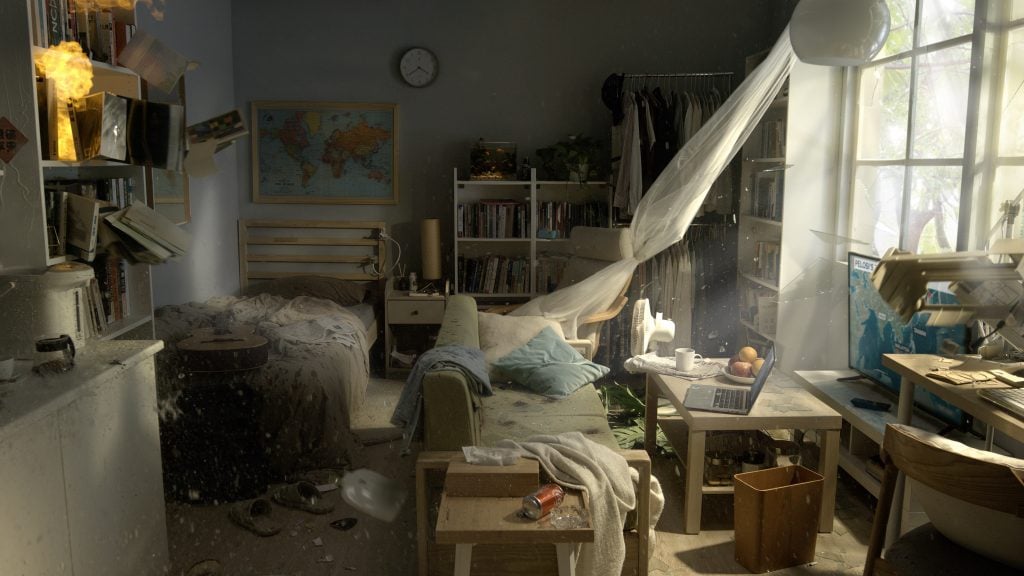
Still from Yuan Goang-Ming’s Everyday War (2024). © Yuan Goang-Ming and TFAM.
The work that draws the most attention to this existential state of war is Everyday Maneuver (2018), the aforementioned eerie video that greets visitors at the entrance. Five drones captured the sight of an empty Taipei city during a Wanan Air Defense Drill, a 30-minute air raid exercise that has occured annually since 1978. Upon hearing the sirens, members of the public are asked to stop what they are doing and take cover at nearby shelters. Despite the fact that the island’s martial law was lifted in 1987, this practice continues to remind people to prepare themselves in case of air strike coming from across the strait. In recent years, the authorities stepped up the precautions in the drill amid growing tensions with China.
The work captures how threats of war are a part of Taiwan’s daily life, noted Chen, a Chinese-American who is currently the head of contemporary art and senior associate curator at the Asian Art Museum in San Francisco. But this mundane experience can also lead to complacency.
“Most people don’t feel much upon hearing the siren,” Yuan said. “You can see young people taking selfies and cosplaying in the midst of the drill… This feels like being a goldfish living in a safe, controlled environment of a fish tank.”
The fish tank is a recurring motif in Yuan’s work, one that he uses to address this illusion of comfort. Take, for instance, an earlier well-known video work included in the show, Dwelling (2014), the title of which is derived from the German philosopher Martin Heidegger’s notion of the human condition, written during Europe’s post-war housing crisis. For the film, the artist created what appeared to be a perfect sunlit living room, submerged in a fish tank. The placid environment of the tank is then abruptly disrupted by an explosion that sends the room’s contents adrift in pieces in the water.
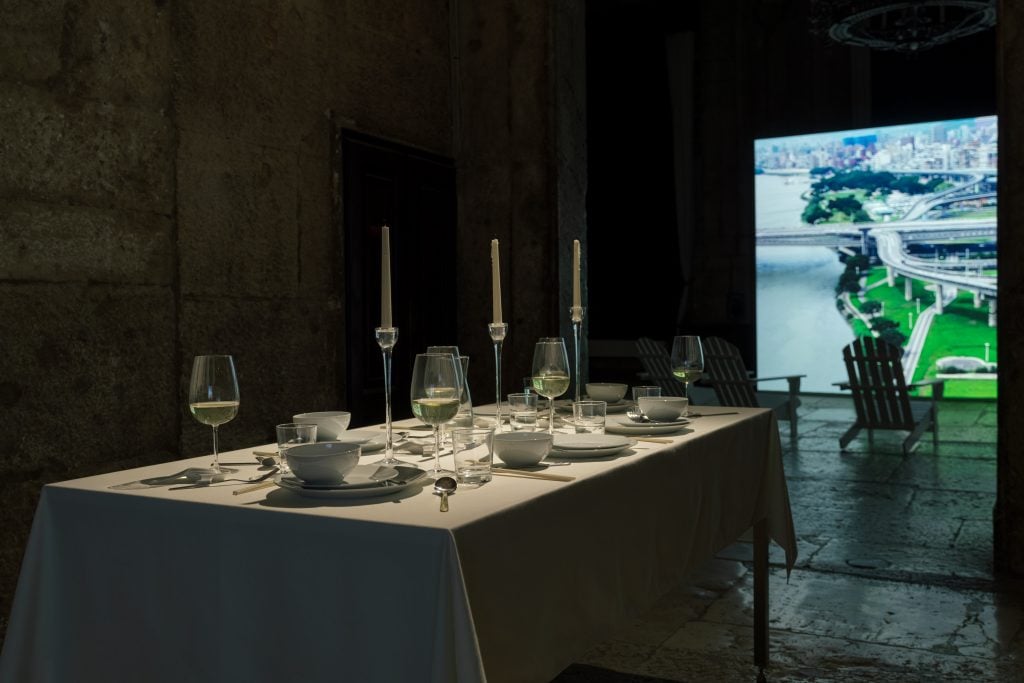
Installation view of Yuan Goang-Ming’s Prophecy (2014) at “Everyday War,” a collateral event of the 60th Venice Biennale, 2024. Photo: Courtesy of TFAM and the artist.
Yuan took this concept even further in his new video work, Everyday War (2023), which was created for this exhibition and took three years to produce. Instead of creating a small scene in a fish tank, the artist built a middle-class bachelor studio apartment at his own home and then physically blew it up, as if the area where the apartment was located was in the center of a war zone. The seemingly quiet domestic space apart is ripped apart by the explosion as the sound of gunshots punctuate the air. A small fish tank on the bookshelf in the room is shattered. Echoing Dwelling, the new work underscores how the illusion of comfort is undermined by the reality of living in a growing state of anxiety on a day-to-day basis.
“But this war does not stop there,” noted Chen, pointing to Prophecy (2014), a kinetic installation in the adjacent room comprised of a rectangular dining table filled with empty, delicate porcelain tableware sets, cutleries, and wine glasses. At first glance, it seemed to have captured a moment of tranquility before dinner was served. But out of nowhere, the table trembled, causing everything sitting on it to clatter loudly. Next to the dining table is a video screen showing another new work, Flat World (2023), a film showing images of similar streets around the world drawing from Google Street View’s database.
“Yuan wants to illustrate that even in a domestic space, we are constantly being challenged, and our own space is also constantly invaded by technology,” Chen said.
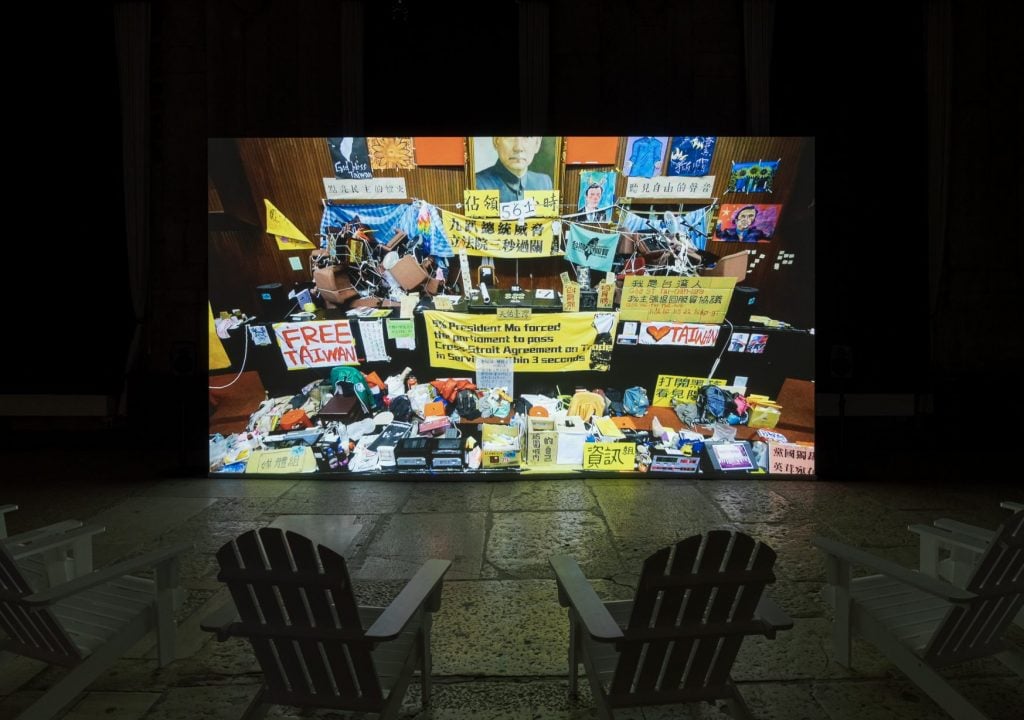
Installation view of Yuan Goang-Ming’s The 561st Hour Occupation (2014) at “Everyday War,” a collateral event of the 60th Venice Biennale, 2024. Photo: Courtesy of TFAM and the artist.
The exhibition circles back to the gigantic screen near the entrance, making it feel almost as if there is no way out. But, upon exiting, it displays a different video work that serves as a light at the end of the tunnel.
The 561st Hour of Occupation (2014) is the artist’s documentation of the 2014 Sunflower Student Movement, the era-defining protest that successfully stopped the passing of a trade pact between Taiwan and the People’s Republic of China. The presentation of this earlier work that captures moments of the nearly month-long occupation of the Legislative Yuan, accompanied by the national anthem played at half-speed, created a space to meditate on the 10th anniversary of this major event and its impact on the region within the exhibition. The events in Taiwan subsequently inspired neighboring Hong Kong’s Umbrella Movement that gained prominence in the city’s 2014 and 2019 political protests, which also saw the occupation of the Legislative Council chamber. However, unlike Taiwan, events in Hong Kong resulted in mass arrests and exodus.
Inherent in Yuan’s work is “resistance and resilience,” said Chen, noting that works on view in “Everyday War” examine the trauma experienced in Taiwan across multiple generations.
“I asked myself, how would I react in an environment like that?,” Chen said, adding that the “ultimate resistance” is finding enough normalcy to continue living in the face of danger. “Hopefully, like those young people [in the Sunflower Student Movement], you’ll also do your best to try to participate in this public life that ultimately is going to come back to each individual person.”
“Yuan Goang-Ming: Everyday War,” is on view through November 24 at the Palazzo delle Prigioni, Venice.